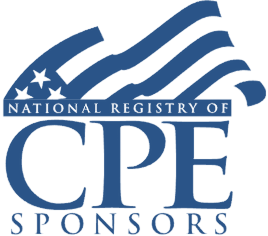Welcome! Save 30% on all CLE, CPE, and Professional Skills webinars, plus 15% off any annual pass with code HOLIDAY25
About the Course
Introduction
This course will provide a practical explanation of completing Form 1120-F, U.S. Income Tax Return of a Foreign Corporation. Our experts will explain how to properly prepare this onerous form, including who is required to file, filing protective returns, and issues for consideration with respect to certain schedules and attachments to the tax return.
Description
Foreign corporations may have a U.S. tax return filing obligation based on their activities conducted in the United States. For example, if a foreign corporation is engaged in a U.S. trade or business, the foreign corporation generally should file Form 1120-F, U.S. Income Tax Return of a Foreign Corporation. Also, a foreign corporation should consider filing a U.S. tax return to preserve the right to claim deductions against effectively connected income or claim certain benefits under an income tax treaty. Various rules and exceptions apply in determining whether a foreign corporation has a U.S. tax return filing obligation.
In addition, foreign corporations engaged in a U.S. trade or business are also generally subject to the Branch Profits Tax. The Branch Profits Tax generally imposes a 30% tax on branch earnings that are deemed to be repatriated back to the foreign corporation’s home office and such tax is reported on the foreign corporation’s U.S. tax return. Income tax treaties may provide a lower tax rate or an exemption.
If a foreign corporation is entitled to benefits under an income tax treaty, the foreign corporation may need to file a U.S. tax return to claim benefits under the tax treaty. A foreign corporation is generally required to file Form 8833, Treaty-Based Return Position Disclosure Under Section 6114 or 7701(b) if the foreign corporation takes a treaty-based position unless reporting is specifically waived.
Unless an exception applies, foreign corporations that have certain related party transactions also may need to report such information on Form 5472, Information Return of a 25% Foreign-Owned U.S. Corporation or a Foreign Corporation Engaged in a U.S. Trade or Business. The Tax Cuts and Jobs Act also expanded the information that needs to be reported on the Form 5472.
Listen as our authoritative panel of international tax experts detail who should file, how to prepare Form 1120-F and its auxiliary forms and schedules, how to calculate the branch profits tax, and how to reduce overall taxation of foreign corporations.
Presented By

Mr. Dokko is a partner in Citrin Cooperman’s International Tax Practice and is based out of the New York office. He practices in all areas of international tax with a focus on inbound and outbound tax planning. He advises clients on U.S. international tax matters, including international tax issues that arise in cross-border M&A, reorganizations, and dispositions. Mr. Dokko has extensive experience in developing, implementing, and reporting tax planning strategies and cross-border restructurings along with advising on issues with respect to U.S. anti-deferral rules, supply chain planning, withholding, tax treaties, financing transactions, and global tax rate reduction. Prior to joining Citrin Cooperman, he was a Principal and Head of Tax at a tax consulting firm in New York City and prior to that, was a Managing Director in the National Tax Office – International of a public accounting firm.

Ms. Dougherty provides U.S. tax reporting, compliance, consulting, planning, and structuring solutions to U.S. and foreign corporations, partnerships, LLCs, individuals, and trusts. She specializes in U.S. international tax reporting and compliance with the preparation and review of the U.S. federal Forms 5471, 926, 8992, 8993, 5472, 8865, 8858, 8621, 8804, 8805, Schedules K-2 and K-3, 1116, 1118, 1042, 1042-T, 1042-S, 8832, 8833, 2555, 3520, 3520-A, 5713, 1120-F, 1040-NR, 8288, 8288-A, 8288-B, 8233, 8840, 8843, 8854, 8938, and FBAR. Ms. Dougherty has extensive experience working with U.S. businesses and individuals with outbound activities in foreign countries. She has also worked with foreign companies and nonresident individuals with inbound activities in the United States. Ms. Dougherty has significant experience with U.S. nonresident withholding tax, foreign partnership withholding tax, and FIRPTA withholding tax. She has managed U.S. tax compliance and advisory client engagements for U.S. C corporations, S corporations, partnerships, LLCs, U.S. individuals, U.S. trusts, foreign corporations, foreign partnerships, foreign LLCs, nonresident individuals, and foreign trusts.
Ms. Dougherty is a CPA and a tax attorney with more than 15 years of combined experience in public accounting, the practice of law, and corporate industry. She was previously a tax partner in a large regional public accounting firm in the Washington, DC area. Ms. Dougherty has served clients in various industries including technology, U.S. government contracting, commercial services, telecommunications, real estate, investment partnerships, commodities, high net worth individuals, and family offices. She has also served as a technical resource to other CPAs, accountants, tax professionals, public accounting firms, attorneys, and law firms.
-
BARBRI is a NASBA CPE sponsor and this 110-minute webinar is accredited for 2.0 CPE credits.
-
BARBRI is an IRS-approved continuing education provider offering certified courses for Enrolled Agents (EA) and Tax Return Preparers (RTRP).
Date + Time
- event
Monday, October 24, 2022
- schedule
1:00 p.m. ET./10:00 a.m. PT
- Who should file Form 1120-F
- Protective Returns
- Treas. Reg. Sec. 1.882-4 along with Adams Challenge (UK) Ltd v. Commissioner and Swallows Holdings, Ltd. v. Commissioner
- Section I - Income From U.S. Sources Not Effectively Connected With the Conduct of a Trade or Business in the United States
- FDAP withholding and when FDAP income reporting is required
- Section II - Income Effectively Connected With the Conduct of a Trade or Business in the United States
- Engaged in a U.S. trade or business
- Activities conducted by a foreign corporation through a U.S. partnership
- Income effectively connected to a U.S. trade or business
- Engaged in a U.S. trade or business
- Section III – Branch Profits Tax and Tax on Excess Interest
- Calculating and reporting the Branch Profits Tax
- Form 8833, Treaty-Based Return Position Disclosure Under Section 6114 or 7701(b)
- When treaty-based return position disclosure is required and certain key exceptions to reporting
- Limitations on Benefits Article
- Form 5472, Information Return of a 25% Foreign-Owned U.S. Corporation or a Foreign Corporation Engaged in a U.S. Trade or Business
- Information generally required
- Exceptions from filing
- Filing obligation for Foreign-Owned U.S. Disregarded Entities
The panel will review these and other key issues:
- Who is required to file Form 1120-F?
- When should an entity file an 1120-F protective claim, even though not subject to tax and possibly not required to file?
- What methods are used to allocate and apportion ECI and non-ECI expenses on Schedule H?
- What are examples of treaty-based positions that might require filing Form 8833, Treaty-Based Return Position Disclosure?
Learning Objectives
After completing this course, you will be able to:
- Determine who is required to file Form 1120-F.
- Recognize when an entity should file a protective claim, even though not subject to tax and possibly not required to file form 1120-F.
- Understand the impact of protective claims.
- Verify that Form 8833 is accurately completed.
- Recognize reportable transactions with related parties that must be reported on Form 5472.
- Identify available exemptions and penalty abatement provisions for failure to file Form 5472 or maintain records.
- Field of Study: Taxes
- Level of Knowledge: Intermediate
- Advance Preparation: None
- Teaching Method: Seminar/Lecture
- Delivery Method: Group-Internet (via computer)
- Attendance Monitoring Method: Attendance is monitored electronically via a participant's PIN and through a series of attendance verification prompts displayed throughout the program
- Prerequisite:
Three years + business or public firm experience at mid-level within the organization, preparing complex tax forms and schedules, supervising other preparers/accountants. Specific knowledge and understanding of foreign corporation taxation, effectively-connected income, protective claims, the branch profits tax, and treaty-based return positions; familiarity with Form 5472 and 8833.

BARBRI, Inc. is registered with the National Association of State Boards of Accountancy (NASBA) as a sponsor of continuing professional education on the National Registry of CPE Sponsors. State boards of Accountancy have final authority on the acceptance of individual courses for CPE Credits. Complaints regarding registered sponsons may be submitted to NASBA through its website: www.nasbaregistry.org.

BARBRI is an IRS-approved continuing education provider offering certified courses for Enrolled Agents (EA) and Tax Return Preparers (RTRP).

BARBRI CE webinars-powered by Barbri-are backed by our 100% unconditional money-back guarantee: If you are not satisfied with any of our products, simply let us know and get a full refund. Contact us at 1-800-926-7926 .
Unlimited access to premium CLE courses:
- Annual access
- Available live and on-demand
- Best for attorneys and legal professionals
Unlimited access to premium CPE courses.:
- Annual access
- Available live and on-demand
- Best for CPAs and tax professionals
Unlimited access to premium CLE, CPE, Professional Skills and Practice-Ready courses.:
- Annual access
- Available live and on-demand
- Best for legal, accounting, and tax professionals
Unlimited access to Professional Skills and Practice-Ready courses:
- Annual access
- Available on-demand
- Best for new attorneys
Related Courses

State Tax Strategies for Athletes and Entertainers: Residency and SALT Deduction Limitations
Tuesday, January 6, 2026
1:00 p.m. ET./10:00 a.m. PT



